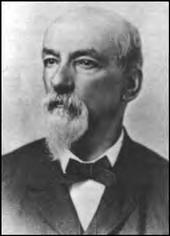Arthur Middleton Manigault was born on October 26th, 1824, in Charleston, Charleston District, South Carolina. He was raised in Charleston, and educated at the College of Charleston, in 1841 he entered the Export Business. With the outbreak of the War with Mexico in 1846, he was commissioned as First Lieutenant of Company F, Palmetto Regiment, South Carolina Volunteers. He served with the Regiment in all of its engagements, including the capture of Mexico City, and returned home with the Regiment in 1848, and was mustered out of service with the company. With the end of the Mexican War he entered the Commission Business, until 1856, when he began work on Rice Planting, in which capacity he was involved upon the Secession of the State in December of 1860.
With the calling up of Volunteers he was elected as Captain of a local Company of Mounted Riflemen, and reported to Charleston, where he was assigned to the staff of Brigadier-General Pierre G.T. Beauregard, P.A.C.S., as a Lieutenant Colonel & Inspector General in 1861. As such he took part in the bombardment of Fort Sumter, and the subsequent surrender of that place in April of 1861. In May of 1861 he was appointed as Colonel of the newly organized 10th South Carolina Volunteer Infantry Regiment, and as such commanded that regiment during its service along the South Carolina Coast. While along the coast he was assigned to temporary command of the First Military District of South Carolina, Department of South Carolina, Georgia, & Florida, with his headquarters at Georgetown, South Carolina, where he was responsible for the construction of several batteries as well as the defense of the region.
In March of 1862 he moved with his regiment to Charleston, where they briefly served in that region before being brigaded with several other Regiments and moving to Mississippi to reinforce the Army of the Mississippi under General Beauregard, where they were assigned to the 4th Brigade of Major General J. Withers Division. With this Brigade he was engaged in the fighting around Corinth, Mississippi, in the Invasion of Kentucky in October of 1862, as well as the fierce fighting at Murfreesboro, Tennessee, in December of 1862. He was with the Army in the Winter of 1863 at Tullahoma, Tennessee, commanding the Brigade, and on April 30th, 1863, he was appointed as a Brigadier General in the Provisional Army of the Confederate States, with rank from April 26th, 1863. His Brigade was composed of the 10th and 19th South Carolina Volunteer Infantry Regiments and the 24th, 28th, and 34th Alabama Volunteer Infantry Regiment’s, and were assigned as part of Major General Thomas C. Hindman’s Division of the Army of Tennessee. He commanded the brigade throughout the upcoming campaigns and battles of Chickamauga, Georgia, in September, and the siege of Chattanooga, Tennessee, in November of 1863, and fell back with the Army to Dalton, Georgia, to it’s winter encampment from December 1863 to May of 1864.
In May of 1864 Major General William T. Sherman, U.S.A., commenced his Campaign against Atlanta, Georgia, in the ensuing fighting General Manigault and his brigade served gallantly, and he was wounded in action on May 18th, 1864, at the Battle of Resaca, but returned to command the Brigade shortly thereafter. After the ending of the Atlanta Campaign, he lead his men into the Tennessee Campaign and the Battles of Spring Hill and finally, for the General, Franklin. In the Battle of Franklin on November 30th, 1864, General Manigault was one of twelve Confederate Generals to fall in the days fighting. He was taken to the rear and spent the remainder of the war recuperating from the wounds he had sustained in the fighting.
Following the Wars end General Manigault returned to his home near Charleston and was engaged in Rice Planting. In 1880 he was elected as the Adjutant General of the State of South Carolina and continued in that office until his death. On August 16th, 1886, General Manigault passed away at his home on South Island, South Carolina, as a result of the wounds he had suffered on that dreadful day of November 30th, 1864, at Franklin, Tennessee. His remains were interred at Magnolia Cemetery in Charleston, Charleston County, South Carolina.
